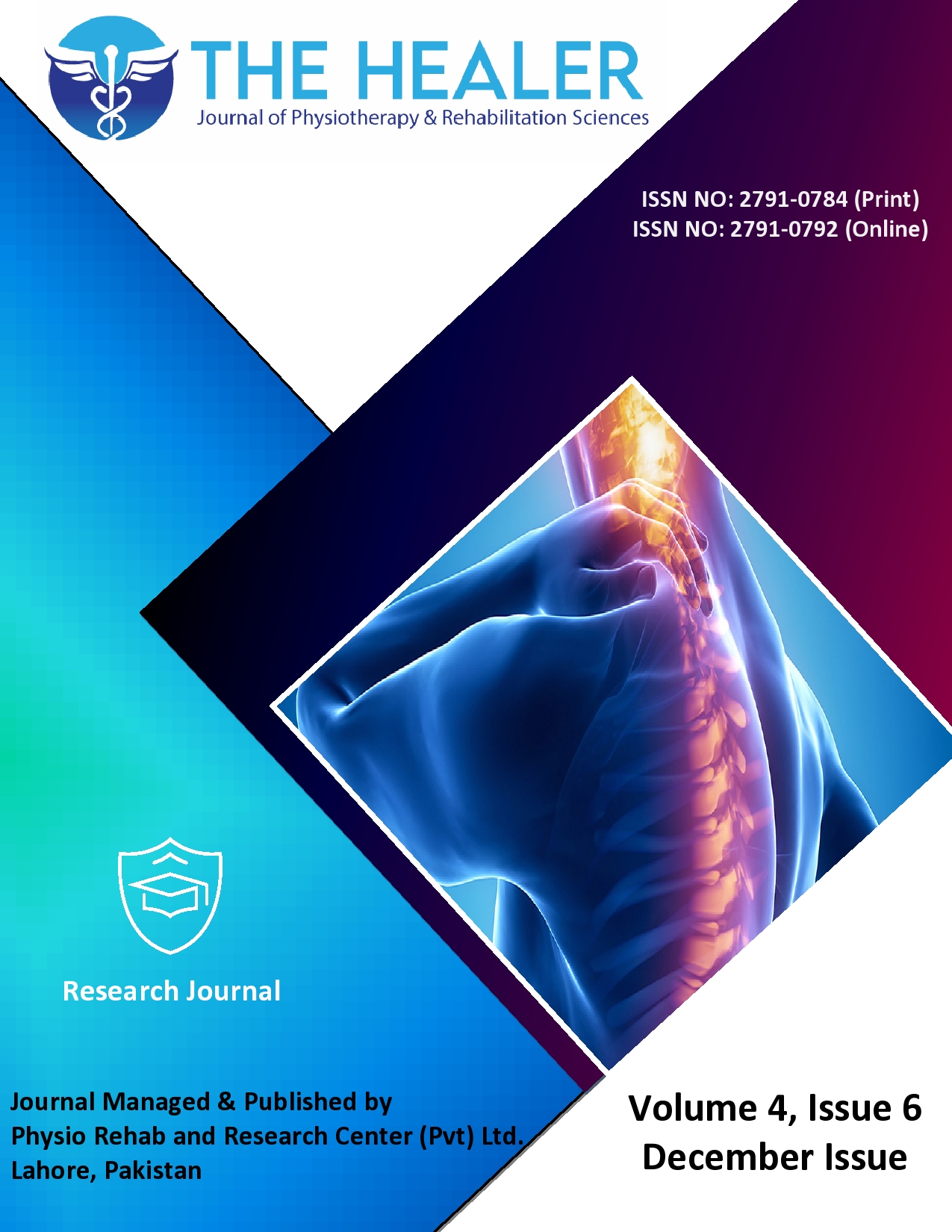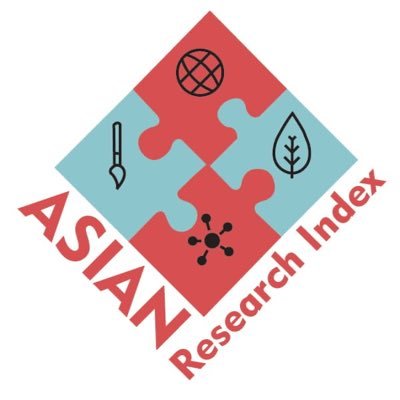Correlation of Forward Head Posture with Neck Pain and Hyperkyphosis among Geriatric Population
Forward Head Posture with Neck Pain and Hyperkyphosis among Geriatric Population
DOI:
https://doi.org/10.55735/hjprs.v4i6.317Keywords:
Forward head posture, Geriatrics , Hyperkyphosis, Reedco posture assessmentAbstract
Background: Forward head posture is a typical postural displacement in which the head extends forward from the sagittal plane and appears positioned in front of the body. It is more likely to occur in elderly and female populations. In modern society, it has become increasingly usual to have an FHP. The neck protrusion, which is linked to higher spinal flexions from overwork and their work environment, causes pain in the neck and the surrounding areas. Objective: This study aimed to assess the relationship of forward head posture, with neck pain and hyperkyphosis in the geriatric population. Methodology: A cross-sectional study with a sample size of 129 participants was conducted. The participants were recruited via convenient sampling from the Holistic Old Age Home, Begum Belques Nazir Old Age Home, Bahria Town Old Age Home, and Happy Homes (Senior Citizens) Old Age Home located in Lahore and Gujranwala, Pakistan. After obtaining written consent, the researcher assessed the demographic information, head, neck, shoulder, and upper back items of the ReedCo Posture Assessment, Numeric Pain Rating Scale, and Occiput to Wall Distance Test (OWD test) in the sample. Results: The mean age of participants was 64.47±5.787 years. Out of 129, 71 (55%) participants were male and 58 (45%) were females. Pearson’s correlation analysis revealed that RPA of the head neck, shoulder, and upper back had a statistically significant moderately positive correlation with the occiput to wall distance test (r=0.52, p<0.001) and a statistically significant very strongly negative. Correlation with NPRS neck pain score (r=-0.85, p<0.001). Conclusion: This study concludes that there is a statistically significant correlation between forward head posture, neck pain, and hyperkyphosis among older adults between the ages of 50 to 80 years. Our knowledge of the relationship between these three factors is limited by the available data. The causal relationship between these three postural abnormalities in the geriatric population is not entirely understood.
Downloads
References
Chu EC-P, Butler KRJC, Practice. Resolution of Gastroesophageal Reflux Disease Following Correction for Upper Cross Syndrome—A Case Study and Brief Review. 2021; 11(2): 322-6. DOI: https://doi.org/10.3390/clinpract11020045
Kang J-I, Jeong D-K, Choi HJJopts. Correlation between pulmonary functions and respiratory muscle activity in patients with forward head posture. 2018; 30(1): 132-5. DOI: https://doi.org/10.1589/jpts.30.132
Mahmoud NF, Hassan KA, Abdelmajeed SF, Moustafa IM, Silva AGJCrimm. The relationship between forward head posture and neck pain: a systematic review and meta-analysis. 2019; 12(4): 562-77. DOI: https://doi.org/10.1007/s12178-019-09594-y
Lee K-J, Han H-Y, Cheon S-H, Park S-H, Yong M-SJJopts. The effect of forward head posture on muscle activity during neck protraction and retraction. 2015; 27(3): 977-9. DOI: https://doi.org/10.1589/jpts.27.977
Sarig Bahat H, Levy A, Yona TJPt, practice. The association between forward head posture and non-specific neck pain: A cross-sectional study. 2023; 39(8): 1736-45. DOI: https://doi.org/10.1080/09593985.2022.2044420
Migliarese S, White E. Review of Forward-Head Posture and Vestibular Deficits in Older Adults. Current Geriatrics Reports 2019; 8(3): 194-201. DOI: https://doi.org/10.1007/s13670-019-00292-8
Worlikar AN, Shah MR. Incidence of forward head posture and associated problems in desktop users. Int J Health Sci Res 2019; 9(2): 96-100.
Singh S, Kaushal K, Jasrotia S. Prevalence of forward head posture and its impact on the activity of daily living among students of Adesh University – A cross-sectional study. Adesh University Journal of Medical Sciences & Research; 2. DOI: https://doi.org/10.25259/AUJMSR_18_2020
Terwee CB, Schellingerhout JM, Verhagen AP, Koes BW, de Vet HC. Methodological quality of studies on the measurement properties of neck pain and disability questionnaires: a systematic review. Journal of Manipulative and Physiological Therapeutics 2011; 34(4): 261-72. DOI: https://doi.org/10.1016/j.jmpt.2011.04.003
Hanif S, Waseem A, Hafeez HM, Jameel W, Mushtaq K, Nawaz S. Head Posture Assessment among Office Workers with Neck Pain; A Cross-sectional Study: Head Posture Assessment in Office Workers. The Healer Journal of Physiotherapy and Rehabilitation Sciences 2023; 3(6): 642-9. DOI: https://doi.org/10.55735/hjprs.v3i6.102
Rathore SJTjotCCa. Use of McKenzie cervical protocol in the treatment of radicular neck pain in a machine operator. 2003; 47(4): 291.
March LM, Brnabic AJ, Skinner JC, et al. Musculoskeletal disability among elderly people in the community. 1998; 168(9): 439-42. DOI: https://doi.org/10.5694/j.1326-5377.1998.tb139023.x
Bartynski WS, Heller MT, Grahovac SZ, Rothfus WE, Kurs-Lasky MJAjon. Severe thoracic kyphosis in the older patient in the absence of vertebral fracture: association of extreme curve with age. 2005; 26(8): 2077-85.
Cho C-YJJom, therapeutics p. Survey of faulty postures and associated factors among Chinese adolescents. 2008; 31(3): 224-9. DOI: https://doi.org/10.1016/j.jmpt.2008.02.003
Mostamand J, Lotfi H, Safi NJJob, therapies m. Evaluating the head posture of dentists with no neck pain. 2013; 17(4): 430-3. DOI: https://doi.org/10.1016/j.jbmt.2012.11.002
Yip CHT, Chiu TTW, Poon ATKJMt. The relationship between head posture and severity and disability of patients with neck pain. 2008; 13(2): 148-54. DOI: https://doi.org/10.1016/j.math.2006.11.002
Johnson GMJS. The correlation between surface measurement of head and neck posture and the anatomic position of the upper cervical vertebrae. 1998; 23(8): 921-7. DOI: https://doi.org/10.1097/00007632-199804150-00015
Lau KT, Cheung KY, Chan MH, Lo KY, Chiu TTWJMt. Relationships between sagittal postures of thoracic and cervical spine, presence of neck pain, neck pain severity and disability. 2010; 15(5): 457-62. DOI: https://doi.org/10.1016/j.math.2010.03.009
Quek J, Pua Y-H, Clark RA, Bryant ALJMt. Effects of thoracic kyphosis and forward head posture on cervical range of motion in older adults. 2013; 18(1): 65-71. DOI: https://doi.org/10.1016/j.math.2012.07.005
Raine S, Twomey LTJAopm, rehabilitation. Head and shoulder posture variations in 160 asymptomatic women and men. 1997; 78(11): 1215-23. DOI: https://doi.org/10.1016/S0003-9993(97)90335-X
Levangie PK, Norkin CC. Joint structure and function: a comprehensive analysis: FA Davis; 2011.
Edmondston S, Singer KJMt. Thoracic spine: anatomical and biomechanical considerations for manual therapy. 1997; 2(3): 132-43. DOI: https://doi.org/10.1054/math.1997.0293
Briggs AM, Van Dieën JH, Wrigley TV, et al. Thoracic kyphosis affects spinal loads and trunk muscle force. 2007; 87(5): 595-607. DOI: https://doi.org/10.2522/ptj.20060119
Hinman MRJTsj. Comparison of thoracic kyphosis and postural stiffness in younger and older women. 2004; 4(4): 413-7. DOI: https://doi.org/10.1016/j.spinee.2004.01.002
Neumann DAJSLM. Kinesiology of the musculoskeletal system. 2002: 25-40.
Michener LA, McClure PW, Karduna ARJCb. Anatomical and biomechanical mechanisms of subacromial impingement syndrome. 2003; 18(5): 369-79. DOI: https://doi.org/10.1016/S0268-0033(03)00047-0
ERkAN S, Yercan HS, OkCU G, Ozalp RTJAOB. The influence of sagittal cervical profile, gender and age on the thoracic kyphosis. 2010; 76(5): 675.

Downloads
Published
License
Copyright (c) 2025 The Healer Journal of Physiotherapy and Rehabilitation Sciences

This work is licensed under a Creative Commons Attribution 4.0 International License.














